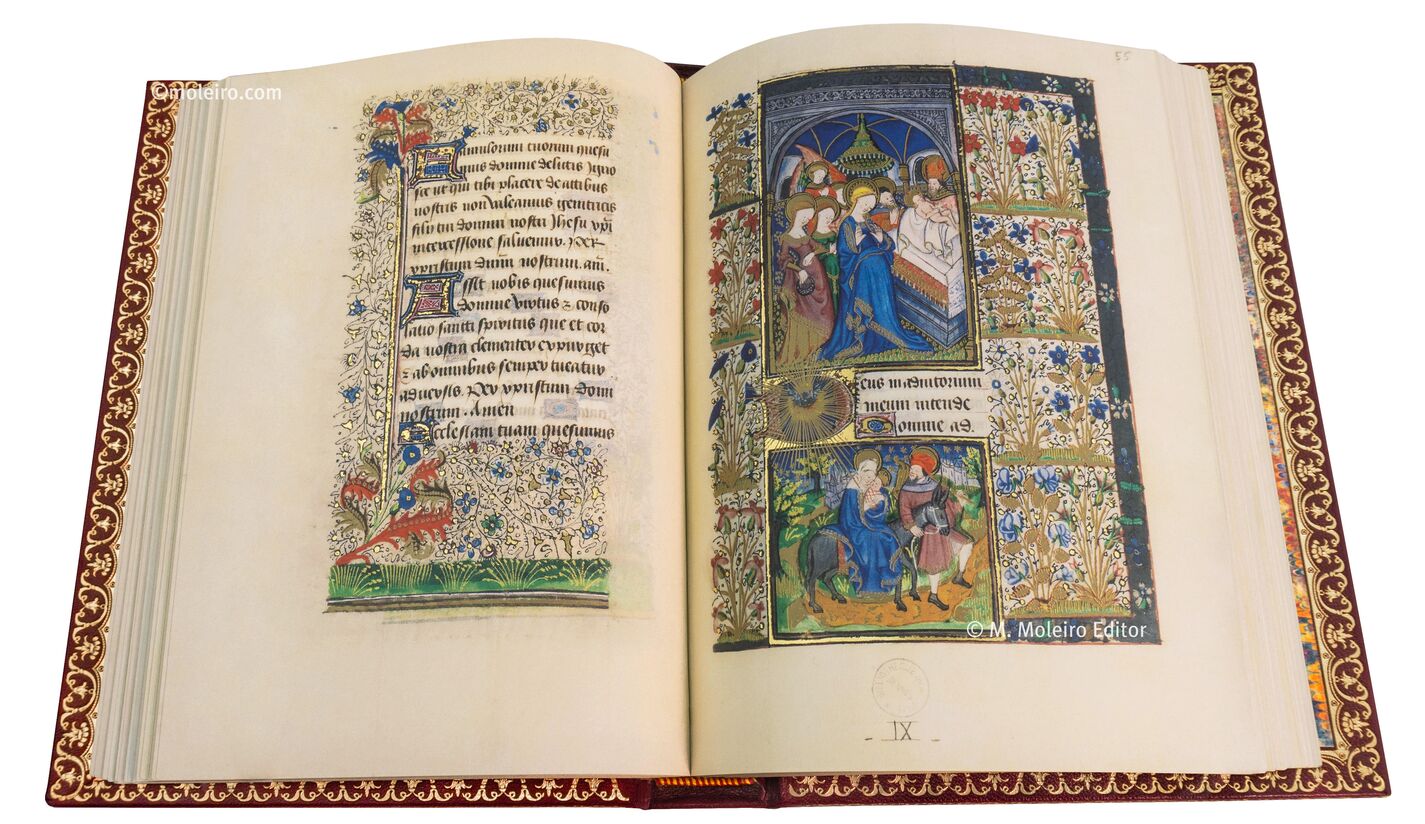
Like the preceding illuminated folio (f. 52r) this is bordered from top to bottom by eight compartments of flowers, four on each side, a dozen bunches in all to accompany the two illustrations, between which are embedded the first words of the office of None of the Hours of the Virgin.
The larger illustration, above, is of the Presentation of Jesus in the Temple, 'And after the days of her purification, according to the law of Moses, were accomplished, they carried him to Jerusalem, to present him to the Lord: As it is written in the law of the Lord: Every male opening the womb shall be called holy to the Lord: And to offer a sacrifice, according as it is written in the law of the Lord, a pair of turtledoves or two young pigeons' (Luke 2:22-4). There is no trace of these two birds in the picture. The Temple is shown like the inside of a mediaeval church. The haloed infant Jesus is again completely naked, against all likelihood but in accordance with the custom in mediaeval iconography, and the high priest, his head covered by a sort of mitre, stands behind the altar, holding the infant on a white sheet. Jesus appears himself to be making the gesture of an offering. On the other side of the altar stands Mary, as usual in a long, rich blue dress and with an ornate nimbus. Her standing figure takes centre stage of the miniature and constitutes its axis. On her left, one might say in her shadow, is Joseph, his hands clasped. Behind Mary are two young women, also with haloes, but without any ornament, unlike that of the Virgin. An angel is present at the ceremony, who is also clasping his hands piously in prayer. Saint Luke's Gospel tells us that on this occasion, under the inspiration of the Holy Spirit, there was present an old man called Simeon who took Jesus in his arms and pronounced over him a blessing (Luke 2:25-35), followed by the prophetess Anna, 'Now she, at the same hour, coming in, confessed to the Lord: and spoke of him to all that looked for the redemption of Israel' (Luke 2:38). But the miniature does not include either Simeon or Anna - any belief that the latter is one of the two haloed young women standing behind Mary takes no account of the detail afforded by Luke, 'She was far advanced in years [. . .] and was a widow until fourscore and four years' (Luke 2:36-7).
Under the usual words, Deus in adiutorium meum intende, is a small compartment with the Flight into Egypt as told in the Gospel according to Saint Matthew (2:13-14), 'And after they [the Magi] were departed, behold an angel of the Lord appeared in sleep to Joseph, saying: Arise, and take the child and his mother, and fly into Egypt: and be there until I shall tell thee. For it will come to pass that Herod will seek the child to destroy him. Who arose, and took the child and his mother by night, and retired into Egypt.' The miniature does not insist on the flight taking place by night, even if the sky above Mary and Joseph's heads appears starry. It shows Mary sitting astride the donkey, hugging tightly to her, cheek to cheek, the infant Jesus wrapped in swaddling bands. Joseph is in front holding the donkey by the bridle. The rays from the Holy Spirit, placed in the capital D of the prayer, flood the group with light.